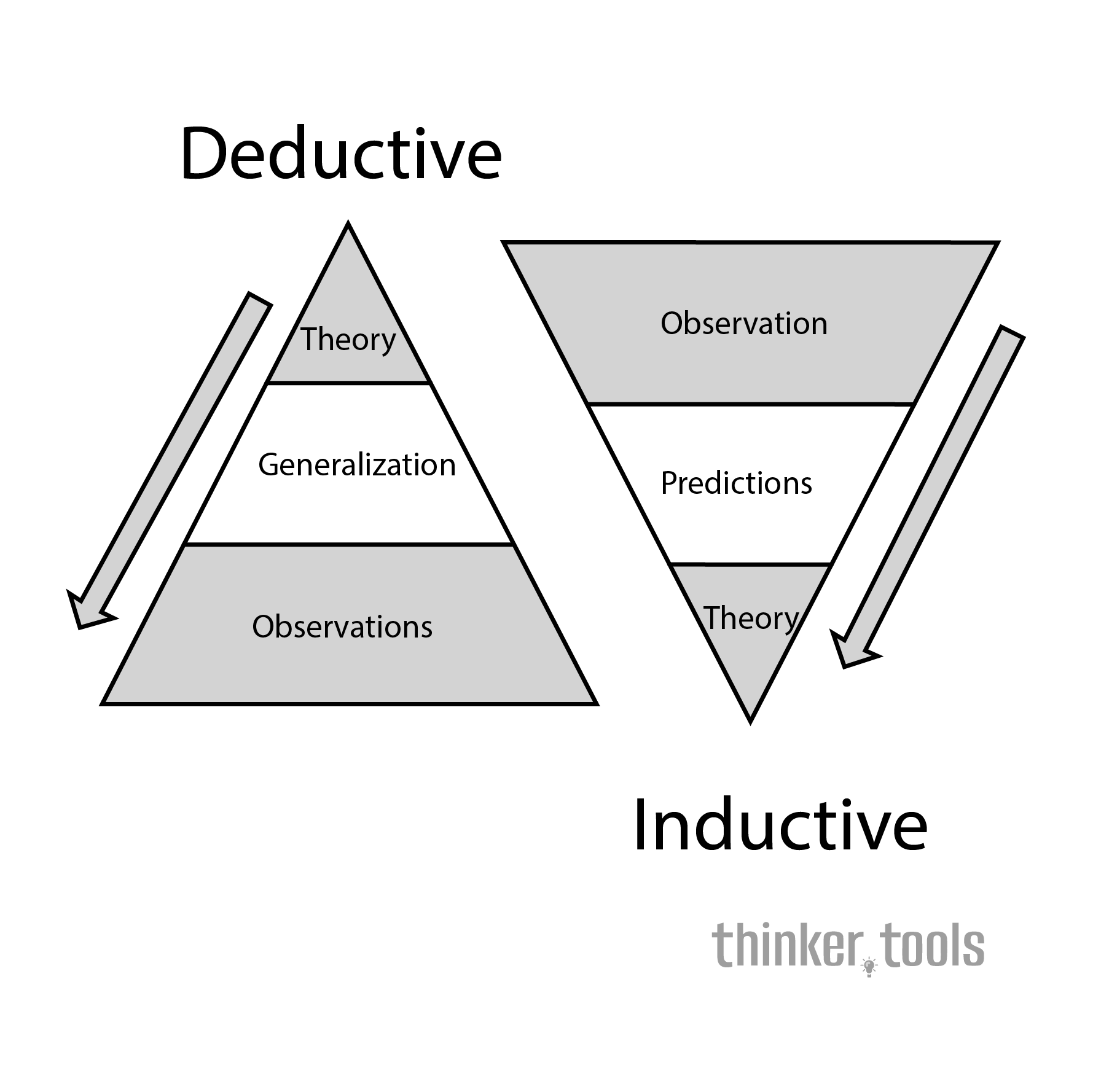
What are Deductive and Inductive Reasoning?
Deductive reasoning moves from general principles to specific conclusions. It starts with premises assumed to be true and derives conclusions that must be true if the premises are true. Think of it as a top-down approach—from theory to specific application.
Inductive reasoning moves from specific observations to general conclusions. It identifies patterns in specific instances and infers broader principles. This bottom-up approach builds theories from accumulated evidence.
While deductive reasoning provides certainty (when premises are true), inductive reasoning provides probability—likely conclusions based on available evidence.
The Historical Development
These reasoning methods trace back to ancient philosophy. Aristotle formalized deductive reasoning through syllogisms in the 4th century BCE, establishing logic as a discipline. Francis Bacon championed inductive reasoning in the 17th century, arguing it was essential for scientific discovery. The Scientific Revolution demonstrated how both methods work together: inductive reasoning generates hypotheses from observations, while deductive reasoning tests predictions from those hypotheses.
How to Use Deductive Reasoning Step by Step
1. Identify Your Premises
State the general principles or facts you're starting with:
- Major premise: A general statement (All mammals breathe air)
- Minor premise: A specific statement (Whales are mammals)
2. Check Premise Validity
Ensure your premises are:
- True (factually correct)
- Relevant (connected to your conclusion)
- Complete (not missing key information)
3. Apply Logical Structure
Common deductive forms:
- Syllogism: All A are B; C is A; therefore C is B
- Modus Ponens: If P then Q; P is true; therefore Q
- Modus Tollens: If P then Q; Q is false; therefore P is false
4. Draw Your Conclusion
The conclusion follows necessarily from the premises:
- Whales breathe air (must be true if premises are true)
5. Test for Validity vs. Soundness
- Valid: Conclusion follows logically from premises
- Sound: Valid AND premises are actually true
How to Use Inductive Reasoning Step by Step
1. Gather Specific Observations
Collect multiple instances or data points:
- Swan 1: White
- Swan 2: White
- Swan 3: White
- ...Swan 100: White
2. Identify Patterns
Look for regularities or common features:
- All observed swans have been white
- Pattern holds across different locations/times
3. Form a Hypothesis
Propose a general principle:
- "All swans are white"
4. Test with New Observations
Seek additional evidence:
- Continue observing swans
- Look for counterexamples
- Consider different contexts
5. Refine Your Conclusion
Adjust based on evidence:
- Discovery of black swans in Australia refutes the hypothesis
- Revised: "Most swans are white" or "European swans are white"
6. Assign Probability
Inductive conclusions are probabilistic:
- Strong induction: Many observations, no counterexamples
- Weak induction: Few observations, possible exceptions
Practical Examples
Deductive in Daily Life:
- Premise 1: The parking garage closes at 10 PM
- Premise 2: It's now 10:30 PM
- Conclusion: The parking garage is closed
Inductive in Daily Life:
- Observation: Every time I've eaten at that restaurant, the service was excellent
- Pattern: Consistent high-quality service
- Conclusion: The restaurant likely has good service (probabilistic)
Scientific Application:
- Inductive: Observing that objects fall when dropped leads to theorizing about gravity
- Deductive: Using gravity theory to predict that a specific object will fall at a certain rate
Business Decision:
- Inductive: Past product launches on Fridays had 20% better sales
- Deductive: If Friday launches increase sales, and we want maximum sales, we should launch on Friday
Common Pitfalls and How to Avoid Them
Deductive Pitfalls:
- False premises leading to false conclusions
- Formal fallacies in logical structure
- Solution: Always verify premises and check logical form
Inductive Pitfalls:
- Hasty generalization from too few examples
- Confirmation bias in observation selection
- Solution: Seek diverse evidence and counterexamples
Combining Both Methods
The most powerful thinking uses both approaches:
- Use induction to discover patterns and form hypotheses
- Use deduction to test predictions from those hypotheses
- Use new observations to refine theories inductively
- Apply refined theories deductively to new situations
Benefits and Life Impact
Mastering both reasoning methods enhances your life by:
- Improving decision-making through structured thinking
- Strengthening arguments with proper logical foundation
- Detecting flawed reasoning in others' arguments
- Balancing certainty and probability in uncertain situations
- Enhancing problem-solving by approaching from multiple angles
- Building scientific thinking for personal and professional growth
- Reducing cognitive biases through systematic analysis
Whether you're evaluating news claims, making business decisions, or solving personal problems, these twin tools of logic provide the foundation for clear thinking. Deductive reasoning gives you the power to derive certain conclusions from established facts, while inductive reasoning helps you discover new patterns and possibilities. Together, they form a complete toolkit for navigating our complex world—helping you think more clearly, argue more persuasively, and decide more wisely. Master these methods, and you master the fundamental tools of human reason.